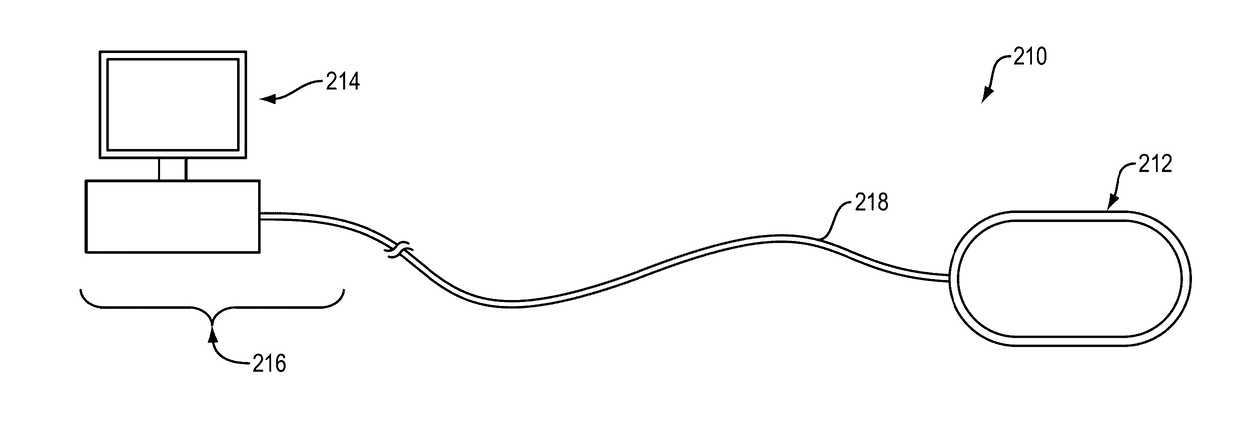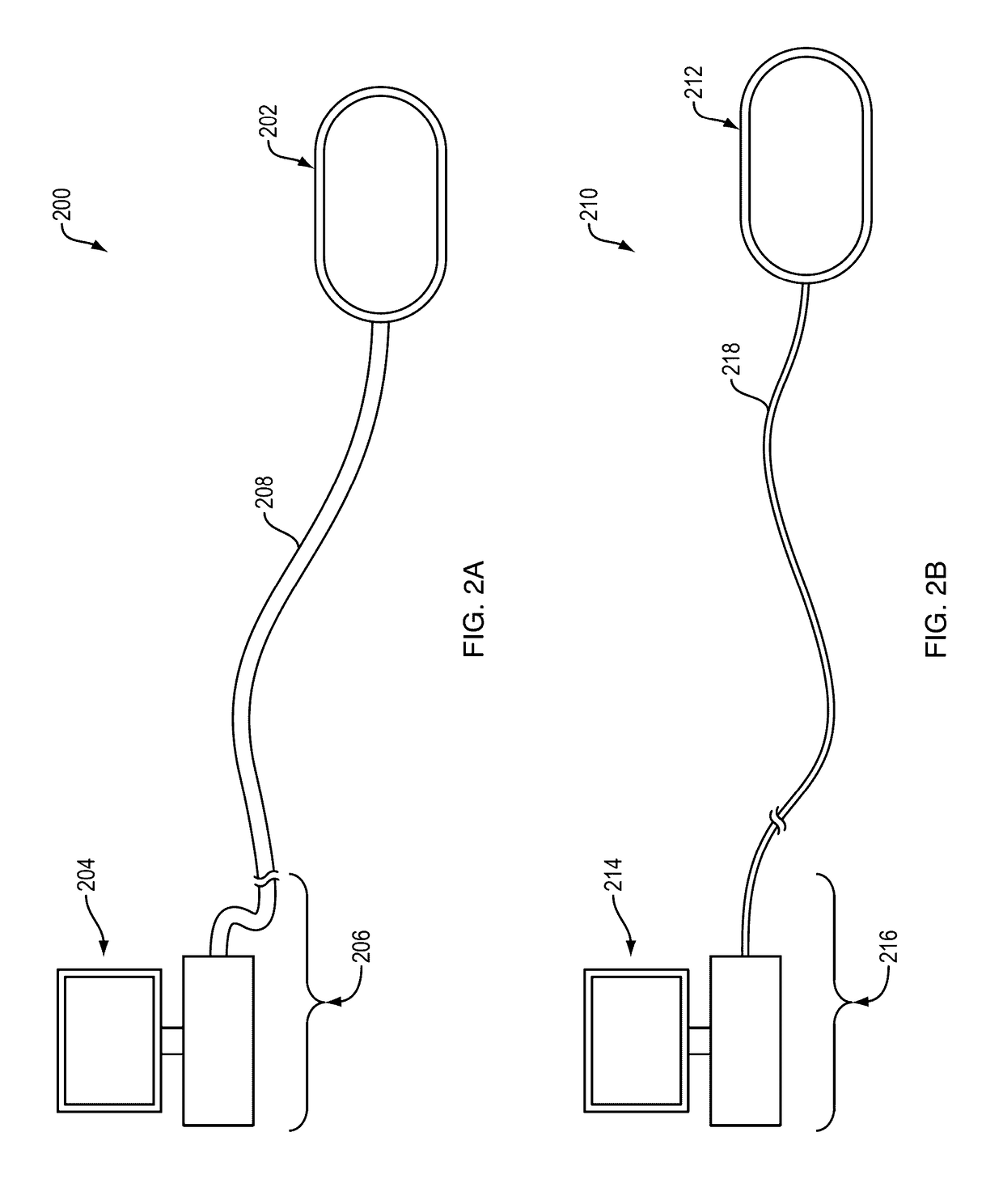Scanning optical probe
a scanning optical probe and optical probe technology, applied in the field of scanning optical probes, can solve the problems of limited application of advanced imaging methods, the gross appearance of the luminal wall does not always detect tissue changes below the surface or microscopic changes, etc., and achieve the effects of reducing health care costs and labor, reducing the risk of affecting the accuracy of imaging methods, and reducing the risk of affecting the patient's health
- Summary
- Abstract
- Description
- Claims
- Application Information
AI Technical Summary
Benefits of technology
Problems solved by technology
Method used
Image
Examples
Embodiment Construction
[0039]A description of example embodiments of the invention follows.
[0040]The present invention is an imaging device that can have a rigid transparent enclosure useful for optical imaging of a luminal organ or surgical cavity using optical coherence tomography (OCT), polarization sensitive OCT, Doppler OCT, OCT angiography, scanning laser, two-photon, harmonic, multi-photon, fluorescence, fluorescence lifetime imaging or other methods. In example embodiments, the enclosure is cylindrical and sufficiently small in diameter and longitudinal or axial length to enable introduction into the luminal organ or surgical cavity. The enclosure can be connected to the imaging engine by a tether, which contains at least one optical fiber, and may contain at least one electrical wire, and may contain at least one tube for pneumatic or hydraulic infusion, and may contain at least one mechanical cable such as a torque cable. In various embodiments, an optical beam can be used to scan in at least tw...
PUM
 Login to View More
Login to View More Abstract
Description
Claims
Application Information
 Login to View More
Login to View More - R&D
- Intellectual Property
- Life Sciences
- Materials
- Tech Scout
- Unparalleled Data Quality
- Higher Quality Content
- 60% Fewer Hallucinations
Browse by: Latest US Patents, China's latest patents, Technical Efficacy Thesaurus, Application Domain, Technology Topic, Popular Technical Reports.
© 2025 PatSnap. All rights reserved.Legal|Privacy policy|Modern Slavery Act Transparency Statement|Sitemap|About US| Contact US: help@patsnap.com



